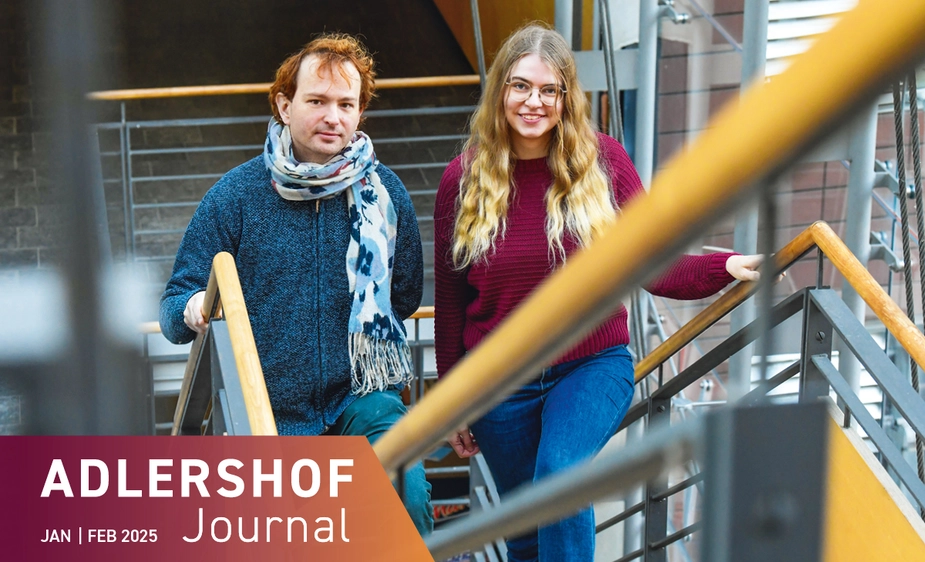Studying together what belongs together
The new BA-level study course IMP at Humboldt-Universität zu Berlin combines three core scientific subjects: computer science, mathematics, and physics
When Laura Michaelis sought to enroll at Humboldt University in 2016, she was initially uncertain. She was interested in the natural sciences but didn't want to commit to just one discipline. This was before the introduction of the new BA-level study course Informatik, Mathematik und Physik (IMP). Unfortunately. The student wasn’t happy about the unfavourable timing. Finally, she enrolled for two majors: mathematics and computer science. ‘Given the choice, I’d be studying IMP right now,’ says Michaelis. ‘With my double degree, I've repeatedly faced issues with the study plan, as there are overlaps in the courses that make it difficult to manage both subjects.’ She now works as a student assistant advising prospective students interested in the IMP programme.
Apart from alleviating logistical challenges, the study course scores additional points compared to a single-subject degree. ‘IMP gives students more flexibility because they study all three subjects on an equal footing,’ explains Gaëtan Borot, a professor at the HU Department of Mathematics and the Department of Physics, as well as chair of the Examination Board and the Commission for Teaching and Study for the IMP Bachelor's programme. The course aims to provide a broad, integrated understanding of the scientific foundations of all three disciplines. And it establishes connections between the three disciplines and their methods. During the first four semesters, basic knowledge of computer science, mathematics, and physics is taught concurrently. In the later semesters, students have more flexibility to focus on one subject while continuing to deepen their understanding of the other two.
‘This fosters a specific way of thinking, characteristic of the natural sciences, a particular form of abstraction ability,’ says Borot. Moreover, many topics were not confined, he says, to a single discipline but lie at the intersection of multiple fields. ‘For example, it is possible at IMP to have two supervisors for the bachelor’s thesis, each covering a different area of study.’ In a single-discipline programme, regulations often do not allow for this.
And the job prospects are also strong. While there are no statistical data on alumni just yet, as the programme started only in the winter semester of 2019, the broad knowledge that IMP students acquire is highly sought-after in industry, computer science, and the field of artificial intelligence. ‘Any field dealing with technology issues needs people who have honed their abstraction ability,’ says Borot. ‘The industrial sector, for example, needs engineers who not only understand physical problems but also have knowledge of programming or an understanding of the complexity of algorithms.’
The professor points to the history of science: Since the late 19th century, the development of mathematics and physics has largely diverged, and the field of computer science is still relatively new. Originally, mathematics and physics were closely linked. ‘Many questions arose from mathematical physics,’ explains Borot. ‘These include methods developed by Newton, Leibniz, and others to calculate the motion of bodies or formulate the laws of mechanics.’ Until the mid-19th century, many mathematicians also worked in the field of physics.
‘Now, once again, our students can study all three natural sciences at the same time and not separately.’ This was highly demanding, but students who chose IMP were curious and highly motivated. Laura Michaelis also observes this in the young people who come to her for academic advising: ‘The dropout rate is lower than in single-subject study courses,’ she says. ‘And most students can figure out where their interests lie during the first four semesters, without having to commit to a specific focus area too early on.’
Heike Gläser for Adlershof Journal
Computer Science, Mathematics and Physics — Humboldt-Universität zu Berlin
